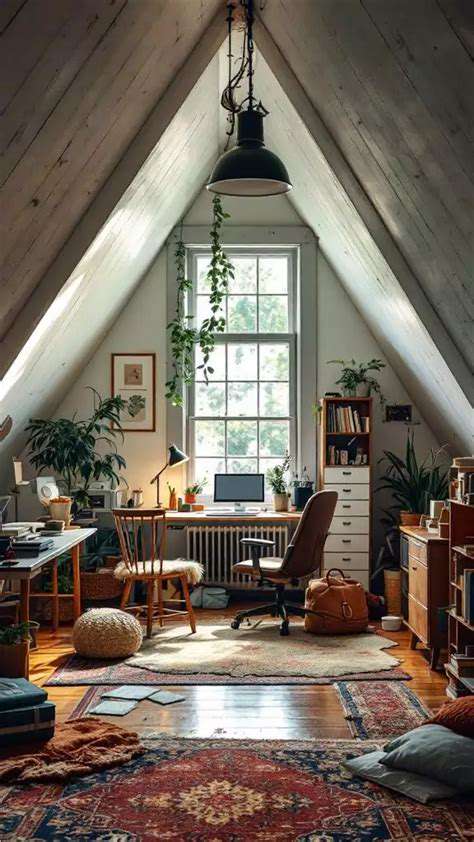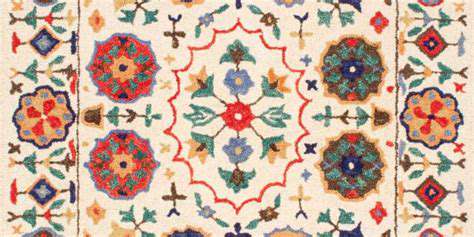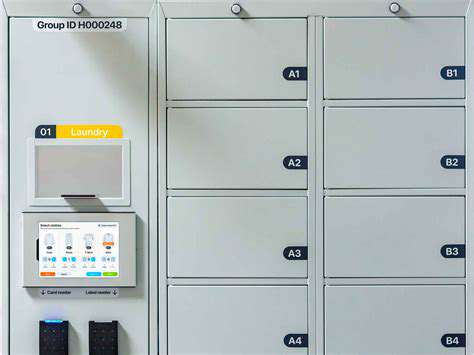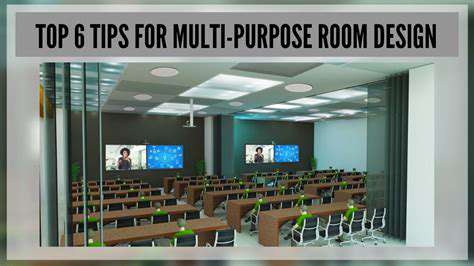Creative Study Room Layouts for a Seamless Blend of Office and Reading Spaces
Crafting a Space That Serves Two Purposes
Designing a study area that effortlessly merges professional and personal functions demands meticulous attention to detail. The secret lies in understanding how to manipulate spatial dynamics - particularly in constrained areas where every square foot matters. For tighter spaces, dual-purpose furnishings like convertible desks or storage-integrated seating become invaluable assets. Clever organizational systems, whether open shelving or concealed cabinetry, ensure materials remain orderly yet accessible regardless of whether you're drafting reports or delving into novels.
Color psychology plays a pivotal role in such environments. Earthy, muted tones establish a serene backdrop conducive to concentration, while strategic splashes of color through art pieces or textiles inject personality. Lighting deserves special consideration - directional task lamps for detailed work should coexist with softer, diffused lighting for reading comfort. The interplay between these elements creates distinct yet harmonious zones within a single footprint.
Balancing Practicality With Visual Appeal
The hallmark of an effective hybrid study lies in its adaptable furnishings. Seek out transformable pieces - perhaps a secretary desk that folds away or modular storage that reconfigures as needs change. Vertical real estate often goes underutilized; floor-to-ceiling shelving not only stores more but draws the eye upward, making spaces feel larger. Well-positioned mirrors perform double duty, amplifying both light and the perception of spaciousness.
Ergonomics shouldn't be sacrificed for aesthetics. An adjustable chair with proper lumbar support becomes non-negotiable for marathon work sessions, while plush seating options accommodate leisurely reading. Thoughtful additions like monitor risers or angled book stands demonstrate how small adjustments can yield significant comfort dividends. The ultimate goal? A space that transitions seamlessly from high-productivity workstation to cozy literary retreat.
Designing the Perfect Reading Sanctuary
Transforming part of your study into a bibliophile's paradise requires attention to tactile experiences. Plush seating options - whether an overstuffed armchair or a window-side chaise - invite prolonged reading sessions. Lighting should be warm and directional, perhaps from an articulated floor lamp that allows precise beam positioning. Living elements like potted greenery or fresh flowers introduce organic textures while improving air quality.
Textural layers enhance the sensory experience. A cashmere throw draped over seating, velvet accent pillows, or even a small wool area rug underfoot all contribute to an atmosphere of comfort. Keep reading materials within arm's reach via discreet shelving or a slender side table, ensuring your next book is always conveniently accessible without disrupting the space's clean lines.
Harnessing Daylight and Organic Elements

Optimizing Solar Illumination
Daylight management transforms interior environments in profound ways. Studies confirm that exposure to natural light regulates circadian rhythms while reducing dependence on electrical lighting. Architectural features like strategically positioned clerestory windows or light tubes can channel sunlight deep into interior spaces. The choice of window dressings - perhaps linen sheers or adjustable louvers - allows precise control over light intensity while preserving outward views.
Window orientation dramatically affects daylight quality. South-facing glazing provides consistent illumination throughout the day, while north-facing windows offer softer, shadow-free light ideal for task areas. Consider incorporating reflective surfaces like polished floors or metallic accents to bounce light deeper into the room.
Biophilic Design Principles
Incorporating nature's palette through materials and vegetation creates spaces that feel inherently welcoming. Raw wood grains and natural stone surfaces engage our innate biophilic responses, lowering stress hormones and improving cognitive function. Reclaimed timber elements add warmth and sustainability, while mineral surfaces like marble or slate introduce organic patterning.
Botanical elements serve multiple functions - improving air quality while adding dynamic visual interest. A mix of trailing plants, upright specimens, and occasional flowering varieties creates depth and seasonal variation. For low-maintenance options, consider air plants or succulents that thrive with minimal care while still providing nature's benefits.
Eco-Conscious Material Selection
Environmentally responsible design begins with material choices. Rapidly renewable resources like bamboo or cork offer sustainable alternatives to traditional hardwoods. Recycled glass countertops or tiles made from post-industrial materials reduce environmental impact without sacrificing style. Even paint selection matters - low-VOC options improve indoor air quality during and after application.
Energy efficiency should guide fixture selection. LED lighting with smart controls, high-performance glazing, and proper insulation all contribute to reduced energy consumption. These choices demonstrate how good design and environmental stewardship can coexist beautifully.
Intelligent Storage Solutions
Reimagining Underutilized Spaces
Closet conversions present untapped potential for creating focused work areas. Even shallow closets can accommodate pull-down desks or slide-out work surfaces that disappear when not in use. Customizable closet systems with adjustable shelving adapt to changing storage needs over time. This approach works particularly well for storing reference materials or office supplies that would otherwise clutter primary workspaces.
Furniture That Works Harder
Contemporary furniture design offers ingenious space-saving solutions. Consider a console table that expands into a full workstation, or an ottoman with hidden storage for blankets and books. Wall beds with integrated shelving or fold-down desks maximize square footage in studio apartments or multipurpose rooms. The key is identifying pieces that provide at least two functions without compromising on style or comfort.
Vertical Storage Strategies
Wall-mounted systems turn blank walls into organizational assets. Pegboards with interchangeable accessories accommodate everything from office supplies to craft materials. Magnetic panels hold metal containers for small items while displaying inspirational images. Even the space above doorways can house shallow shelves for infrequently used items. The goal is to keep surfaces clear while maintaining easy access to essentials.
Decorative Yet Functional Elements
Storage solutions needn't be purely utilitarian. Decorative boxes can corral small items while contributing to the room's aesthetic. Floating shelves arranged in artistic configurations display books as decor while keeping them accessible. Even a well-chosen room divider can incorporate storage pockets or display ledges. The most successful solutions marry form and function seamlessly.

Read more about Creative Study Room Layouts for a Seamless Blend of Office and Reading Spaces
Hot Recommendations
- Trendy Kitchen Interiors: Open Concepts and Smart Storage Solutions
- Expert Multi Functional Room Ideas for Combining Entertainment with Fitness
- Modern Home Office Inspirations for a Study That Merges Work and Leisure
- Modern Bathroom Design Ideas for Optimizing Small Spaces and Safety
- Expert Strategies for a Children's Room That Inspires Growth and Imagination
- Modern Bathroom Inspirations for a Space That Prioritizes Safety and Efficiency
- Creative Multi Functional Space Ideas for a Room That Combines Gym and Media
- Modern Techniques for a Multi Purpose Room That Enhances Home Entertainment and Fitness
- Expert Guide to Balancing Modern Art and Functional Living Room Layouts
- Expert Tips for a Children's Room That Balances Play, Learning, and Security











